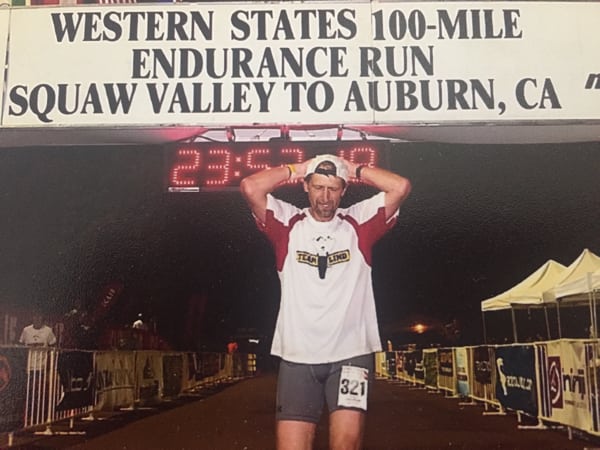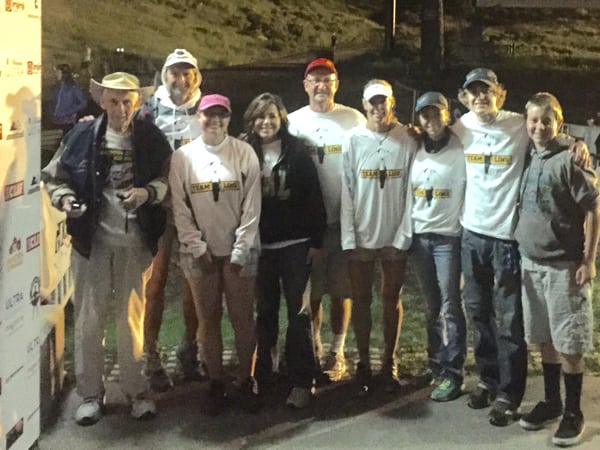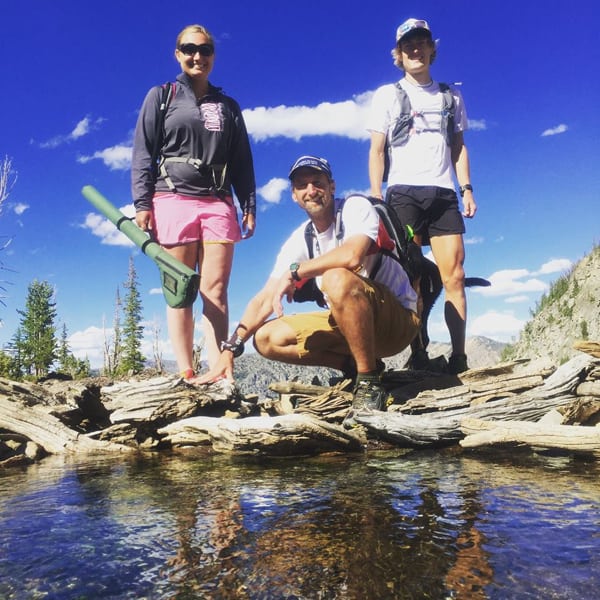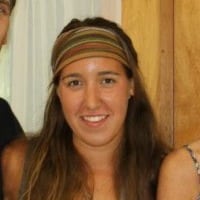“Somebody has to write down all this history while I can still remember it.”
This story is about the life of Paul Lind: son of Dr. Bob Lind, father to two kids, ultrarunner, race director, coach.
This is also a story about the Western States Endurance Run, as told through filter of the three generations of Lind family, from 1974 to the present and looking into the future. It is the history narrated by a family raised upon the dirt of the Western States Trail. Sport long timers might know about the deep connection between Western States and the Lind family. Some of you might be like me and newer to the sport, unknowing of this link. This story serves as a partial chronicle for us all, however, a reminder of who ran the Western States Trail before us, who set the records and broke them, who left their sweat, blood, and tears on the trail before the race became what it is today.
And, this might be a story that serves as a bridge, showing just how closely linked our sport’s past, present, and future are. At least how the Lind family thinks they could be.

Paul Lind crossing the finish line of the 2015 Western States 100. All photos courtesy of Paul Lind.
Paul, 48, lives in Challis, Idaho where he has raised two kids, Cody and Bree Lind. His story did not start in Idaho, though. It started in Roseville, California, not far from Auburn, where the Western States finish line lies. He grew up the son of the town doctor, Dr. Bob Lind.
According to Paul, his father was an Iowa-bred farm boy who, in addition to his professional career, volunteered his services at the local high-school sporting events and worked every year at the Tevis Cup, the famous 100-mile horse race on the Western States Trail, which began in 1955. For years, Dr. Lind treated the riders of the Tevis Cup, and when Gordy Ainsleigh participated in and finished the Tevis Cup as the first and only runner in 1974, it was Dr. Lind who monitored his well being along the way. And when the Western States 100 became an official race and until his 2006 retirement, Dr. Lind was the Western States 100 medical director.
“I don’t think anybody other than Gordy thought he could do that. I don’t think anyone thought he could have run 100 miles, let alone beat some of the horses, let alone finish under 24 hours,” Paul said. “My dad was fascinated.” Gordy’s run inspired many to start running, Dr. Lind and Paul included. Gordy also became a friend of the Lind family. For years, Paul says that Gordy would appear at the Lind house, make his way through a loaf of bread, a half-gallon of milk, 12 oranges, then go for a run with the Linds. Dr. Lind even helped Gordy with a career in chiropractic medicine.
Elaborates Paul, “My dad would ask, ‘Want to go for a run?’ He would say, ‘Sure,’ and then take his pants off and he’s got these old boxer shorts on. And they’d go for a run. He’s quite a character. He was as free-spirited as you can get and my dad was a conservative farm boy. The two were complete opposites, yet he and my dad became good friends.”

Cody Lind (center) getting advice and tips from Dr. Lind (left) and Gordy Ainsleigh in 2014.
Paul visited his hometown a few weeks ago, and he called Gordy on the way. “’Hey Gordy, I’m going to be around this weekend. Want to pick some oranges and catch up?’” he recalled. “I know he misses the old man as much as I do.” Dr. Lind passed away in March 2016, losing a battle with cancer.
Back in 1977, explains Paul, the famed Wendell Robie started the first official Western States 100 with a pistol, an hour before the Tevis Cup so as not to spook the horses. The next year, Dr. Lind shot off the starting gun, except he pulled out the Lind family shotgun to do so. “Our family has been hunters for generations. Dad hunted, I hunt, and having guns out West is pretty normal,” Paul said. “The 20-gauge shotgun has been used ever since.”
Dr. Lind fired his last shot to start the 2015 edition of Western States. He fired the gun as hundreds took off for the run, Paul amongst them that year. Dr. Lind’s request was for the race to keep the shotgun tradition in the family. “The [Western States] Board upheld that request, and so I was honored to start the race [in 2016] for the first time with the 20-gauge. That meant a lot to the whole Lind family.”

Team Lind ready to crew and pace Paul at Western States in 2015.
2015 was Paul’s second time running and finishing Western States. The first time was back in 1986, at just 18 years old. And even then, his bond with the race started 11 years before that. At age seven, Paul tagged along with his father during that 1974 Tevis Cup, when Gordy crossed the finish line on two feet instead of four hooved ones. Every year since, he has been somewhere on that trail, helping his dad and cheering on the runners.
“I was grunt labor, cheap slave labor!” he said. They traveled along the 100-mile route in a green Chevy Blazer, hauling medical supplies and a large old-fashioned scale from aid station to aid station. The two would see the start with Dr. Lind firing off the gun, and then they would stop for a quick breakfast before heading to Robinson Flat.
Then, they were off to the main spots: Devil’s Thumb, Michigan Bluff, Foresthill, Highway 49, always delegating to volunteers and checking on things. They maintained a pace on the heels of the top-10 guys, then would circle back and catch the mid- and back-of-the-pack runners. “Usually a call came in when they needed him somewhere, a radio call, and we would head back to Michigan Bluff or somewhere,” he said. “Remember, back then there were no cell phones, no internet.”

Paul and his brother, Kurt, hanging out on No Hands Bridge on the Western States Trail in 1977.
Michigan Bluff remains to this day Paul’s favorite spot on the trail to watch runners. It’s in the midst of an old mining town, where the fans are cooking cheeseburgers, and when the heat there is 105 degrees Fahrenheit, then the heat down into the canyons where the runners are coming up from is closer to 120.
“If you go down and watch the first runners come up and they see someone out of the blue there, and this could be Kilian [Jornet], the fastest runners in the world, they see someone clap… They like to see someone there clapping for them,” he said. And before Jornet, it was Jim King, Tim Twietmeyer, Ann Trason, Scott Jurek, and so many more.
Paul was there for “The Year Jim King Beat the River” when King reached the Rucky Chucky river crossing before the river-crossing volunteer crew, so he ran upstream and swam across.
He was there when Twietmeyer, his favorite ultrarunner of all time, was being hunted down by Ann Trason, who Paul says is “the greatest ultrarunner of all time, man or woman,” as she finished second-place overall and a few minutes back.
“Jurek’s string of seven wins is impressive. And the newcomers. My favorite newcomer is Kaci Lickteig,” he said. “You can’t help but love her.”

Gordy and Cody in Challis, Idaho.
On a short trip to Roseville over Christmas this year, Paul ran the short section of the Western States Trail from Green Gate to the Highway 49 Crossing, he said, and that feeling came back. “That feeling of being on the course, that is something that has never changed. It is that sacred feeling of being in the high country, seeing Cougar Rock, coming into Robinson Flat and seeing your crew for the first time,” he described. “When you’re out there on the trails, you will know what I’m talking about. You start thinking, Holy cow, I’m on the Western States Trail. After all these years, I still get that feeling; that I am running in the footsteps of Gordy, the same footsteps of Tim and Ann, as Timmy Olson and Kaci and [Jim] Walmsley.”
Back in 1986, Paul’s first time running Western States, was when features of the race began to change. In the early years, people would head to sections and stash water the day before, or just relied heavily on the streams and creeks. In 1985, race officials measured the course, and found it to be several miles too short. The post-1985 course added in the famous California Street as part of its lengthening.
Says Paul, “That was when I ran it. That was tough, having a new course. Nobody cared! None of us cared because that was the course, whether it was 94 miles or 104, that was the Western States course,” Paul said. “But they wanted to make it right, so they added where you turn out of Foresthill and drop to the river.” That was the first big change, explains Paul. Then came the lottery concept, limiting the ability to just sign up when you decided to tackle the race. After that was the 30-hour finish award, extending it from the 24-hour limit.
Dr. Lind, Paul said, struggled with the medical changes; the biggest was taking away the weighing requirement. “He struggled with the fact people were running the race who medically shouldn’t be and were getting themselves in trouble,” he said. “When they went away with weighing runners, he really struggled with that. Weight back in the old days was a big deal.” The products of nutrition, fluids, and electrolytes, plus the clothing, packs, and shoes are all huge advancements, but also just steps further and further from the old-school essence of running.

Paul climbing in the Lost River Range in Idaho.
When the finish line was transferred to Auburn’s Placer High School track rather than the fairgrounds, Paul realized the changes are just a way of life, something he must accept. The race has always been a place to test oneself, however, now it is more than just one day of running: it’s a drawn out period of lottery, training, social-media posts, and activities.
“It is so formal now. The event starts with all these seminars,” he said. “I love going every year, but it has required a deep swallow to accept the changes.” Paul’s biggest fear of how these changes is affecting the age-old event? The possibility of Western States losing its meaning, its roots that were dug into those trails so long ago. “The toughest part for me is hoping the people who are racing it now understand the significance of what they are doing,” he said.
Paul’s Western States memories include it all: running, cheering, volunteering, pacing, and just being there each year to watch the historic, classic race. What he’s learned from that race–from the runners, his personal experience, and his dad–impacts every other aspect of his life, from directing his own ultra to the bond he shares with the multiple generations of Lind outdoor lovers and runners.
Four years ago, there was some interest in creating an ultramarathon in central Idaho by a group of runners. As the popularity of endurance running began increasing, Paul decided to join in his own way. “I thought that if there was a race put on in central Idaho, I was going to be the one putting it on,” he said. “And, I took it to a different level.”

The start of the 1977 Western States 100. Seven-year-old Paul (near left side of image) watches from the side.
Paul holds the same standards to his Idaho race, the River of No Return Endurance Runs, as is held to Western States. River of No Return is a multi-distance June race, run in the very remote town of Challis, traversing up, down, and through the mountains which loom beyond town.
“My standard is Western States and that is how I expect a race to be put on,” he said. “I don’t have the budget and I am in a very remote part of the U.S., but that’s the standard.” The race is a big deal in the small-town community. The hotels are filled, restaurants packed, and many of the residents help volunteer at aid stations each year. Paul stays at the finish for every 25k, 50k, and 108k finisher. “It’s fun to see them finish and give them their award and then they say, ‘Wow, that was a beast,’ or ‘Wow, that about killed me.’ I like that,” he said, laughing.

Bree Lind, Paul, and Cody hiking atop Mount Morrison in Idaho’s Lost River Range.
Some of the local high-school cross-country runners, with Paul’s permission, even run the event’s shorter distances. Paul has been coaching for the last 12 years, coaching the school’s team toward four state championships. Of course, his runners know about his personal ultra history, and Paul bears their questions, yet he doesn’t push them into the long-distance sport.
He understands the toll an ultra takes on the body. “I am very careful. I will let some distance runners do the 50k only because I know their training. I push running in the mountains. I mean, they never run on the roads, but they have to understand the different type of discomfort,” he explained. “I tell them it is not like being out of breath in lap three of the mile. It’s about being sore and uncomfortable for three to four hours.”
Coaching high-school teams is a true passion of Paul’s, which influenced him to begin taking on more coaching positions. He has been coaching professional runners for the last few years, specifically working with athletes training for big races, like Western States.
His son, Cody, has taken up his own interest and found success in trail running. The third-generation Lind runner, Cody, has grown up among all things Western States, literally walking in Paul’s footsteps as he helped Dr. Lind over the years and watching each year as well. Cody recalls hearing about the race from his dad at age five, perhaps younger. He too, started attending the races with his dad and grandpa, hearing the shotgun go off, stopping for a cheeseburger at Michigan Bluff, and dozing in a sleeping bag at the finish line.

Cody and Paul in Idaho’s Lost River Range during a weekend adventure.
“We would go the Thursday before the race because the medical meetings would start,” Cody said. “He [Dr. Lind] had exited from being the main medical director, but would still be part of it and go to every meeting. Then we would head up to the race and he would start it. That was the best feeling, being right next to him.”
The Lind family is close. Like, 10-hour hikes every weekend and calling Bree, who lives in Wyoming, to come pace them during their next race close. It’s a family bond all began with Dr. Lind. “Grandpa, he was such a smooth talker. He would take anyone in, some guy on the course, take that person in and make him or her feel like they are the most important thing in the world, so special,” Cody said.
And about his father, Paul, Cody says, “He’s passionate about anything he does whether it is being a father to me, teaching an athlete, race directing, and in his own running. He’ll study and take everything to the next level. He wants to excel in everything.”
From grandfather to father to son, the same passions and core values drive each one toward their path. “Our biggest passion together is fishing. Grandpa would travel to Idaho and we would do a lot of fishing along the Salmon River,” Cody said. “That is the best memory I have of all three of us.”

Paul and Dr. Lind at the finish of the 1986 Western States 100.
The past, to the present, to the future, what is next?
For Paul and Cody, they will continue to run. The two go out every weekend without a goal. They explore, hike, climb, and try to make it home before dark. “Truly special,” Cody said, referring to the ability to run with his dad. “It is something not many can do and that we take advantage of. Come Sunday, ‘Well, what did you do this weekend?’ ‘Oh, we had a 10-hour adventure.’ Not just running, but climbing mountains, finding horns, hunting.”

Paul and Cody on a run in Idaho.
For the sport of ultrarunning, Paul hopes it will be more adventure racing, stage racing, something less formal that people don’t need support or crews. “I think you’ll see more of these adventure or stage races over a couple of days. Races with less formality, less aid stations, and more self support,” he said. “I like that. I want you to tell me, ‘Okay, the race is to get here to this town and you have to get over these mountains. There’s a bucket of army soldiers on this mountain and you have to get one to prove you were there.’”
For Western States, it remains the “granddaddy” of ultras, a harbor, hopefully, for both the sport’s history and its future.
If there’s any advice I can offer as a young trail runner who gets to look into the sport’s multiple generations in writing these articles, it’s to learn from history, from where we’ve been, from the people who’ve already done what we do. Residing inside this family’s story, for example, is the knowledge Dr. Lind imparted to many thousands of runners over the years and to his son and grandson–the knowledge to healthfully run 100 miles, the importance of keeping ultrarunning fun, and much more.
Even with his passing last year, Paul and Cody still look to the Lind granddaddy for advice. “Both Cody and I respect my dad, and the decisions we make in our lives, running, or in general, are influenced by my dad and how he lived his life,” Paul said. “We often think, Well, what would Grandpa think of this?”
Call for Comments (from Meghan)
- Do you know Paul Lind? What stories can you share about Paul?
- And about about an intragenerational Lind story? If you have a good tale of Cody, Paul, and/or Dr. Lind together at Western States or elsewhere, leave a comment to share it!

Three generations of Linds (left to right): Cody, Dr. Lind, and Paul.

Paul Lind.
